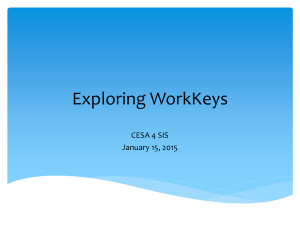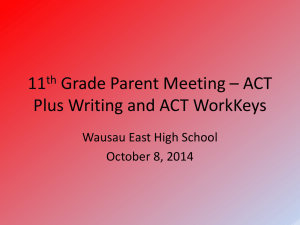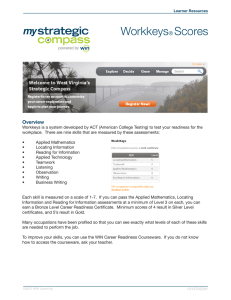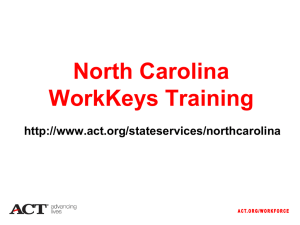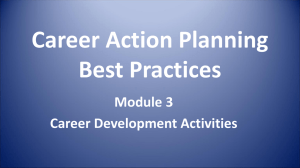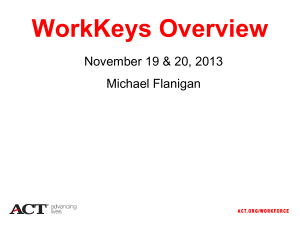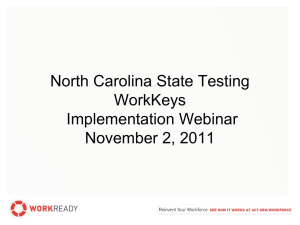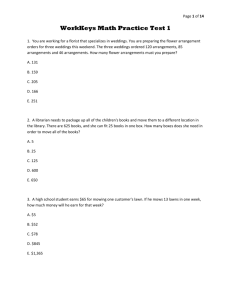interpersonal_skills..
advertisement
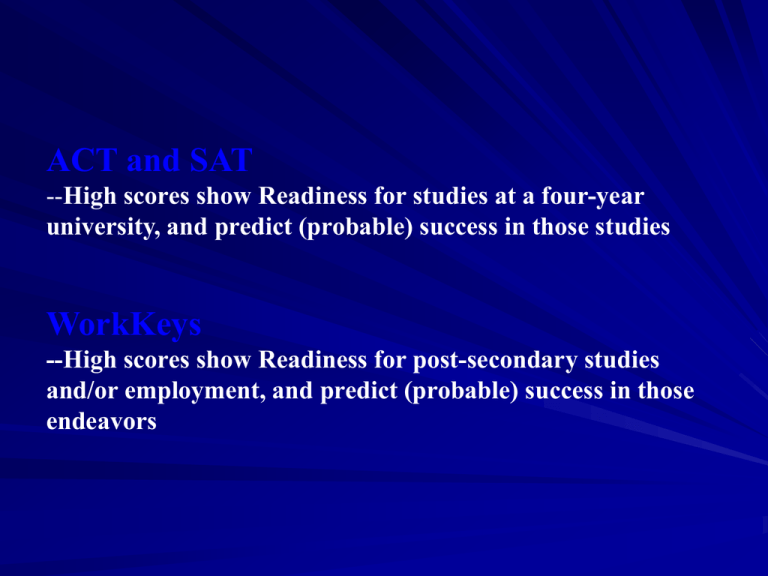
ACT and SAT --High scores show Readiness for studies at a four-year university, and predict (probable) success in those studies WorkKeys --High scores show Readiness for post-secondary studies and/or employment, and predict (probable) success in those endeavors WorkKeys Skill Areas • Communication Skills Listening Reading for Information Writing • Problem-solving Skills Applied mathematics Applied Technology Locating Information Observation • Interpersonal Skills Teamwork WorkKeys skill levels are: • clearly defined • not related to grade levels • easily understood • a common metric that can be used by educators and employers • legally defensible • forming the basis for other components of the career development system WorkKeys Skill Areas and Range of Skill Levels • Communication Skills Listening Reading for Information Writing 1-5 3-7 1-5 • Problem-solving Skills Applied mathematics Applied Technology Locating Information Observation 3-7 3-6 3-6 3-6 • Interpersonal Skills Teamwork 3-6 WorkKeys Skill Areas Recommended for Merit Award • Communication Skills Listening Reading for Information Writing • Problem-solving Skills Applied mathematics Applied Technology Locating Information Observation • Interpersonal Skills Teamwork WorkKeys Skill Areas and Skill Levels Recommended for Merit Award • Communication Skills Listening Reading for Information Writing • Problem-solving Skills Applied mathematics Applied Technology Locating Information Observation • Interpersonal Skills Teamwork 6 4 Range (3-7) (1-5) 6 (3-7) 4 (3-6) 5 (3-6) Work Keys Feasibility Study Results • WK tests are sufficiently challenging to high school and post-secondary students; they are NOT too simple for most students, not even students in post-secondary schools • For most WK skills, the higher skill levels require some sort of critical thinking or reasoning, not just basic understanding, computation, or observation • WK skills are transferable across a multitude of careers and occupations • Students, teachers, and counselors can quickly evaluate readiness for various occupations by comparing a student’s individual skills to occupational profiles

